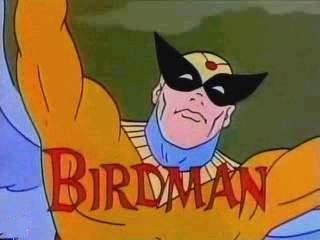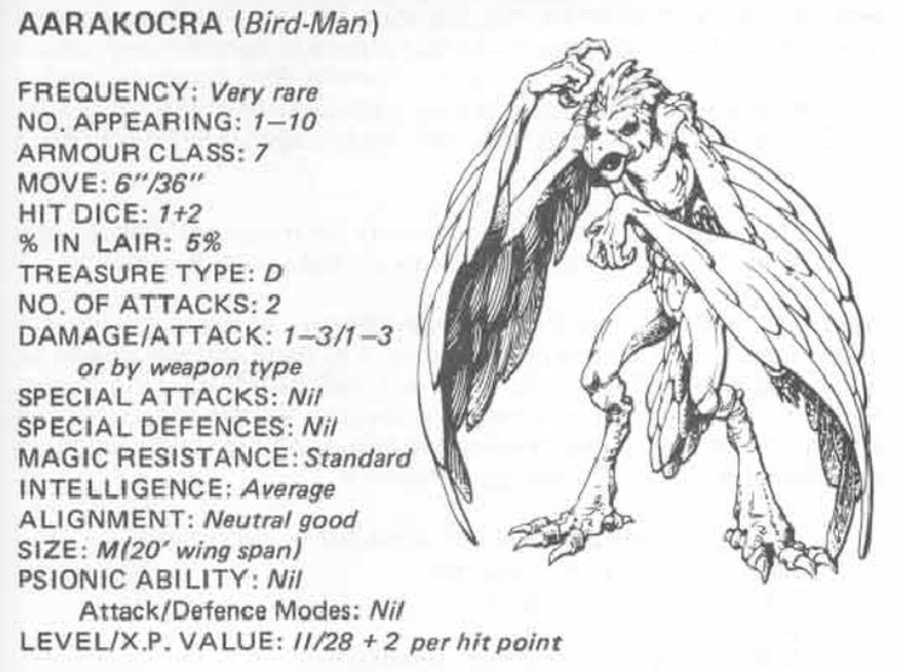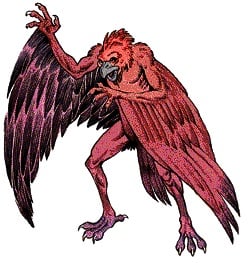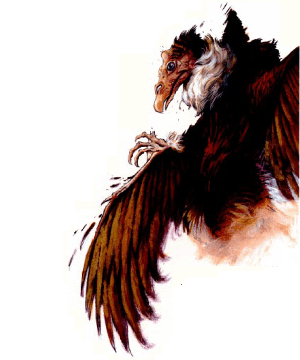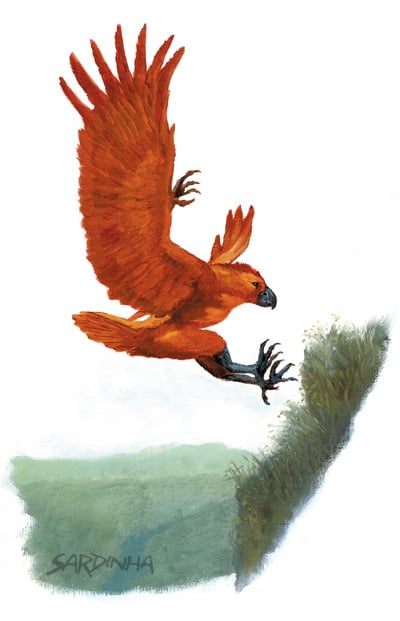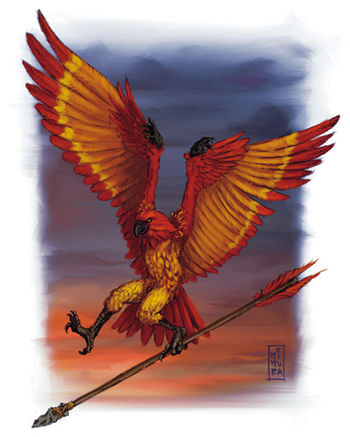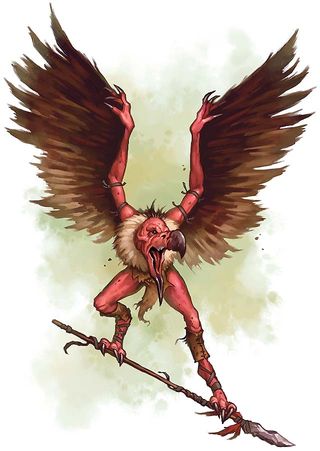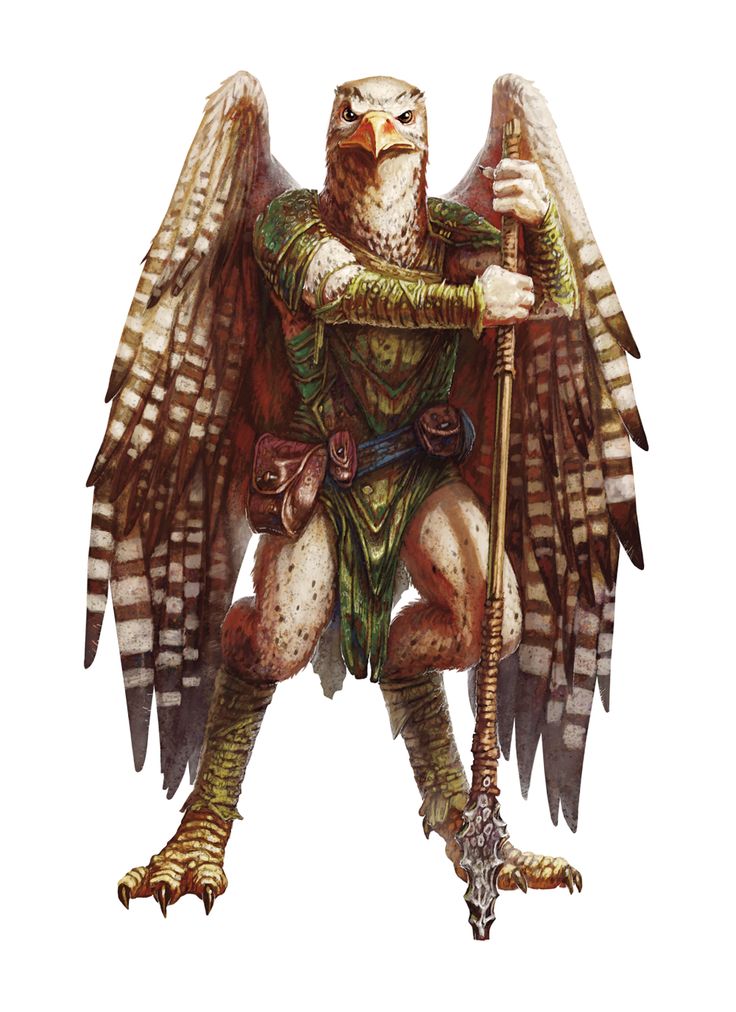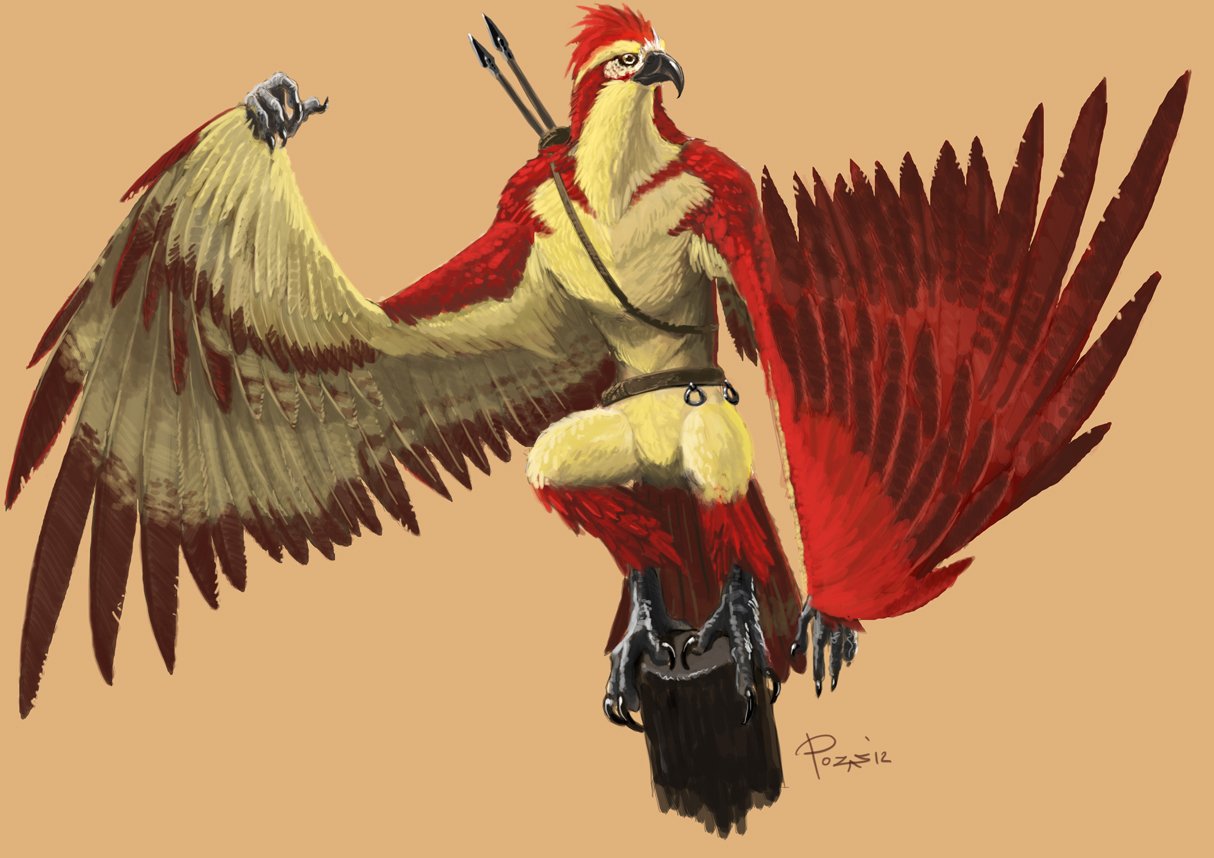Monster Spotlight: Aarakocra


This week’s monster is not the original Birdman, nor does it feature Michael Keaton, so we’ll just have to wing it.
Aside from being nigh-impossible to spell right on your first try, the Aarakocra has a special place in the history of D&D as the first among monsters, alphabetically speaking. Since the Aarakocra’s creation in 1981, they’ve been the leading monster in any list, beating out Aerial Servants, Aasimar, and even Aardvark, Giant and Aardvark, Dire. And with regards to that last one, let me just say, you definitely don’t want to run into one on a dark night in an enclosed area.
But we’re here today to talk about one of the other races of bird people in D&D–where last week we talked about a race of bird-like men who have a fall from grace that can be traced across the editions with the Kenku–this week is all about Aarakocra. Also known as the bane of DMs running low-level adventures, these bird men began as monsters, and like the Kenku made the transition to player race over the editions. And as we travel through the years, it’s pretty easy to see why.
So let’s take flight with the Aarakocra.
Back in the heady days of 1st Edition, the Aarakocra had a fairly descriptive entry. Especially for 1st Edition when a lot of the entries would be short and sweet with a note or two about how you can use their parts to either create magic items or power spell effects. but the Aarakocra have 10 paragraphs and an entire page to themselves.
We learn that they are a race of intelligent avian humanoids who live in small tribes high in the mmountains–they are isolated for the most part, but will interact with humans who encroach on their territory if necessary. They have massive wings that end in hands and make them capable of flight, and they are capable of making a dive bomb attack with its favored javelin weapons–getting a mighty +4 to hit and double damage with their diving charge.
Again, the description of these birdmen is incredibly vivid. They feel as vibrant as the colours described at length in the paragraph about their plumage. Their society, as mentioned, is tribal, and so we get to learn they have shamans and other mystics high up in their mountains–five aarakocra working in unison can summon an Air Elemental through an aerial dance over three rounds of combat. The air elemental will fight on their behalf without having to be controlled.
There’s just a lot of detail about them–even in first edition, they felt a little more like something you’d see a player wanting to pick up. There’s definitely stuff here to spark the imagination.
2nd Edition Aarakocra get a full color upgrade, though, I think the colorist kinda phoned it in–they don’t have the variety of the colored-in-Kenku from 2nd edition. They are just sort of a weird pinkish-red color uniformly. But–leaving aside that art decision, the 2nd Edition Aarakocra is very much the same as their 1st Edition predecessors. Again, they lead the charge in the monstrous compendium, again, they have but a single hit die per creature, but–they get even more characterization.
Notably their society is expanded; Aarakocra tribes generally cover territory over about 10,000 square miles, which they’ll mark with colorful banners and pennants, and they all live in a giant communal nest and have religious ceremonies and so on–again, a surprising amount of detail for these birdmen.
This edition also saw the creation of two variant Aarakocra, the Athasian Aarakocra, native to the world of Dark Sun and the Malatran Aarakocra appeared as a part of the Living Jungle campaign run by the RPGA.
The Malatran, other than being Aarakocra but a jungle fowl, were basically the same. The Athasian Aarakocra on the other hand had psychic powers, were vultures, worshipped the sun, and could summon air elementals via a special ritual that was considerably more complicated than taking three rounds out of melee combat. Their society was fairly detailed, as they are good desert birds. Well, desert birds of any alignment, really. But that’s Dark Sun more than anything else–this is an important precedent though–the variety of birds present as Aarakocra would see them change in later editions.
In 3rd Edition, the Aarakocra didn’t show up until the Faerun Campaign Supplements started coming out. They originally appeared in the Monsters of Faerun supplement. They are the most birdlike in this iteration–and a beautiful red parrot-looking type of bird as well.
As in prior editions–they maintain the ability to summon air elementals in groups of five or more, but they also, notably lose their dive attack ability. They can fly, though, which is especially powerful from this edition onward, but they rely on simply hurling javelins, rather than their signature dive-javelin-double-damage-hurl. And their hunting territory is reduced from the whopping 10,000 square miles to just 100 square miles, with “fluid” borders. In 3rd Edition, they are rumored to be immigrants from Maztica and having only a few colonies in Faerun.
BUT! Third Edition is also the place where the Aarakocra first appear as a player race. They began soaring in popularity (well, pun aside, they did alright in this edition) with a native fly speed being a big draw for potential builds and organized play. As a player race, they were particularly strong—2 Strength but +4 Dexterity, a 90ft. fly speed, racial bonuses to listen, spot, craft, and knowledge checks. Admittedly they do have a +2 level adjustment, but–2 levels for a fly speed that persists through dispels and antimagic fields is a good trade.
4th Edition Aarakocra only appeared in the Dark Sun Creature Catalog (though again, they lead the charge). They came in the same variety pack style entries that everything in 4th embodied. There were skirmishers who could fly around the battlefield with long spear, and they retained their special dive attack, though now they stab with their spears (at range 2 — so with a 10-foot reach) instead of hurling them, and only do extra static damage rather than straight up doubling it.
Or you could have an Aarakocra Windcaller who had all kinds of magical effects, most of which revolved around wind and dust and gusts of dusty wind. Lots of area damage and concealment–as far as Controllers go, the Windcaller is an excellent example of how that battlefield role is meant to work.
5th Edition Aarakocra look radical. Holy cow look at that majestic eagleman. In 5th Edition, the Aarakocra see the return of the 4th edition iteration of their diving attack. They no longer deal extra ranged damage, but do get double damage on a diving attack against a ground-bound target if they have moved at least 30 feet towards a target. And with a fly speed of 50 feet and a Challenge of 1/4, they are a deadly threat at early levels, especially in numbers.
And as most monsters in 5th Edition get, they have expanded lore (both in the Monster Manual and in the Elemental Evil Player’s Companion). They have a role to fill in the cosmos–they are Enemies of Elemental Evil. They serve the fabled Wind Dukes of Aaqa as spies who patrol the planes in search of temples of Elemental Evil.
On the Material Plane they live in aeries atop the highest mountains, watching for signs of Elemental Incursions from the plane of air. Here they lose their nature as triablistic hunters who have territory–5th Edition Aarakocra have no concept of political borders or property ownership. They are all about using what you need and leaving the rest to the winds.
But they get a significant exploration in the Elemental Evil Player’s Guide, which you can download for free RIGHT NOW! They are characterized as Sky Wardens who are at home in the sky, who are dynamic and acrobatic fliers. As well they are native to the plane of air, rather than the prime material plane. They are collectively on a quest for the Rod of the Seven Parts a legendary artifact that can be used to defeat creatures of chaos.
And here, they are a player race. They make excellent monks with a +2 to Dexterity and a +1 to Wisdom. They have a base speed of 25, but a fly speed of 50 which they can only used if they are not wearing medium or heavy armor/ Naturally this is why most Aarakocra are Monks–their unarmored bonus and speed bonus combo really well, giving them extra mobility and unarmed attacks that let you do slashing damage if you want.
At any rate, that’s the Aarakocra, an enduring and avian player race since 3rd edition. A monster for all times–though again, a good example of how not all monsters are meant to be fought. There’s a lot to them to spark the imagination, so give them a try in your next game!
What monster would you like to see spotlit next? Let us know below.

